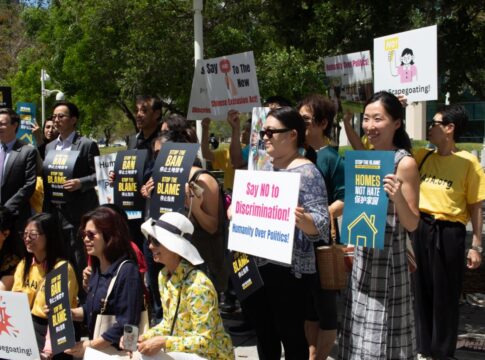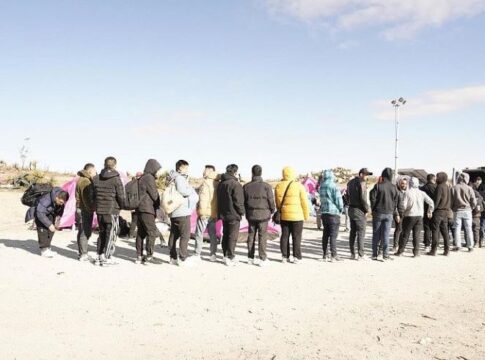By Allyson Pang, AsAmNews Intern
A recent survey found many Hawaii residents claiming tourism creates more problems than benefits. They blame tourism for issues of overcrowding, higher prices and lack of respect for the aina or land.
A decade ago, Hawaii’s Resident Sentiment Survey found 80% of residents saying that tourism brought more good than bad. Since then, it has dropped to a little over 50%.
Hawaii’s reliance on the tourism industry became clear during the pandemic.
“We went from the lowest unemployment in April 2020 to the highest unemployment percentage in the United States in one month. The majority of people’s job is either directly related to tourism or indirectly,” said Jerry Agrusa, a professor at the University of Hawaii.
LATEST STORIES
Co-founder of the alternative travel group, Hawaii Detour Project, Kyle Kajihiro says tourism is an extractive industry that relies on land development, which in turn hurts ecosystems and displaces Native Hawaiians. His project demilitarizes famous sites across Oahu to visitors.
Hawaii is marketed as a safe destination with perfect weather, but it has become a selling of a fantasy, according to Kajihiro.
“That’s what people know about Hawaii, even if it’s wrong, even if it’s completely distorted based on racist stereotypes and so forth,” said Kajihiro.
Waipio Valley on the Big Island is home to one of the last wetland taro growing areas in the islands, holding strong cultural and historical value for its Native Hawaiian residents. For 30 years, residents have struggled to work with the county to fix their deteriorating roads and have found no success.
Last month, the valley was reopened to tour groups.
“These guys are bringing people down on these heavy vans three times a day, getting paid by those guys and giving zero back to the valley,” said Kahakalau.
Waipio Lookout residents have tried to stop the county from marketing the valley as a destination, but Dr. Kahakalau says tour groups still come to the area. Some even trespass off the main public road into private property.
Now, some residents are worried the road will collapse without repair or management of tourism by the county.
“Two thousand years of taro production, two thousand years of Hawaiian history will be lost,” said Kahakalau.
To counter the effects of tourism, Waipio Valley residents have set up a 24/7 kupuna or elder, check point at the road’s entrance in order to limit access into the valley.
According to Dr. Kahakalau, the majority of tourists have been understanding of protecting sacred places such as Waipio. Some tourists have signed their petitions and even donated money.
“We have had more support than we have had pushback. But there are people that come say “I paid $14,000 to be here, now I can go anywhere I want,” said Kahakalau.
“People are now, because of Instagram and geo-tagging, are finding places that previously only locals knew about…pushing local people out of their own places of reprieve and places for recreation,” said Laurien Nuss, founder of Conscious Concept, an environmental travel consultant.
“The native people are being exploited for their culture, for their stolen land and they don’t even have any of the infrastructure to benefit from that. For example, you can’t find a Hawaiian old hotel on Oahu. There is none,” said Kajihiro of the Detour Project.
“Some of the last self-sustaining communities are being robbed of their ability to sustain themselves from the ocean and the land because other people think their right to recreation is more important than the right of people that have lived in this valley for hundreds of generations,” said Kahakalau.
From Honolulu, I’m Allyson Pang for AsAmNews.
AsAmNews is published by the non-profit, Asian American Media Inc. Follow us on Facebook, X, Instagram, TikTok and YouTube. Please consider making a tax-deductible donation to support our efforts to produce diverse content about the AAPI communities. We are supported in part by funding provided by the State of California, administered by the California State Library in partnership with the California Department of Social Services and the California Commission on Asian and Pacific Islander American Affairs as part of the Stop the Hate program. To report a hate incident or hate crime and get support, go to CA vs Hate.










I was shocked, stunned, and incredibly disappointed to listen to what had to be a haole radio disc jockey in Maui making fun of the Asians in Hawaii. It gave me a flashback of being in China during a FIFA conference in the mid-2000s. As I got in the elevator that was filled with Anglo soccer players they immediately broke out into the typical “ching chang chong, kling klang klong” crap. I then responded to them in my native English tongue that 25% of Chinese speak or at least understand English, and being they are currently in China that their being so racist and disrespectful is not particularly smart.